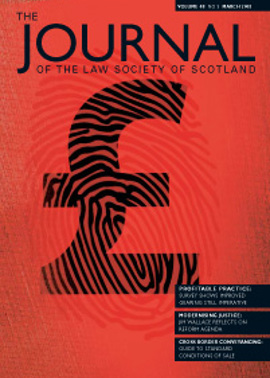Plain speaking
Introduction
I know practitioners face many difficulties in using plain language because I face the same challenges. Recently, a client complained about my rewrite of one of his documents. My version was shorter and easier to understand, had no jargon, no legalese and no 50 or 100-word sentences. So how could the client prefer the previous version? He preferred the old wording because he thought it was more lawyerly and people would take it more seriously. He is not alone. Client demands, pressure of time and pressure to conform are three serious obstacles to plain language drafting.
Client demands
One common situation we face is when a client wants to be certain a contract covers a specific problem. The client’s request may be because of a bad experience in the past or something he read in the Sunday papers.
If the contract doesn’t cover the specific situation we should change the contract to suit. However, often the contract does deal with the situation but not, perhaps, as directly as the client would like. So, for the sake of an easy life, we tack on an extra – unnecessary - clause. We have dodged the issue.
The right approach is to explain to the client how the existing contract covers his concern and there is no need for an extra clause. But that takes time.
Style time
We use style books. Some firms have their own in-house styles. Few (if any) are in plain language. When we are short of time to draft a new contract we reach for the style book. There’s nothing wrong with using styles so long as we don’t turn our brains off when we turn the word processor on. In other words, we shouldn’t assume a style is correct or suitable just because it is a style.
One approach I recommend is using the style as a benchmark for a new draft contract. Instead of using the style text, I make a summary of what the style contract says. For example, a distribution contract might include sections about:
- the appointment;
- the length of the contract;
- ending the contract;
- the goods;
- the distribution area;
- payment terms; and so on.
I will draft a contract and measure it against my summary of the style. Does my draft cover everything in the style? Does my draft cover everything in my client’s instructions? If my draft assumes something, do I say what happens if the assumptions are wrong? And because I have a summary of what the style says this often helps me shorten the contract. In this way I try to draft a contract that is in plain (or at least, plainer) language; one the client understands more easily. But, again, that takes time.
Conform
Jack Black, the inspirational trainer, points out that society often uses the phrase “but we’ve always done it that way” as a reason why we carry out certain jobs the way we do, without thinking. He recommends we spend time asking why we do jobs in a particular way. If we do this, we may find improvements. Stephen Covey, another management thinker talks about “sharpening the saw” as a way of making improvements. Both are poking a stick at the same truth: if we keep doing tasks the old way, we’ll never make improvements. In short, the pressure to conform limits us from doing our best. So, if we want to make improvements in drafting we have to ditch the old methods.
For example, when is the last time you saw a contract with an example, or a note? Traditional drafters might turn in their graves, but such an approach brings worthwhile advantages. A worked example allows everybody to check their understanding of how a contract term would work, is right. Similarly, how often do you see a contract with information presented in a table instead of hidden in a sea of words? Or, how often do you see a formula clearly setting out a calculation?
There are many tips and tricks for improving drafting.
I have highlighted some in previous columns and the recommended books give many more in greater detail. So, there’s plenty of material available. Of course, you still need to deal with time pressures.
Time to go
There’s no easy solution to being under pressure of time. And that’s one reason this is my last column on the topic of plain speaking. I have other challenges to meet. But I will be going to meet them knowing plain language is the way to go and the way to draft. I believe, like the introductory quote, traditional legal language will die; slowly, but surely. Although I won’t be doing the column, I hope to be contributing to the struggle in other ways.
In this issue
- Delivering a modern justice system
- Conveyancing aspects of cross border transactions
- What the more profitable firms are getting right
- Structure your thoughts to cope with change
- What price equality?
- A handy tool for the family lawyer
- Reminder of the need for separate craves
- It could happen to you
- Reducing the burden of keeping track of time
- The Data Protection Act – what you need to know
- Seven steps to effective risk management
- Client relations
- Plain speaking
- Europe
- Website reviews
- Book reviews






